VANCOUVER — More than 150 area residents crowded into a conference room at Clark College’s east campus Saturday morning to hear from transportation experts and to voice their concerns to lawmakers and local elected officials about solutions to Washington and Oregon’s traffic congestion issues.
The “Transportation Solutions’’ Legislative Town Hall was hosted by Reps. Liz Pike (18th District) and Vicki Kraft (17th District).
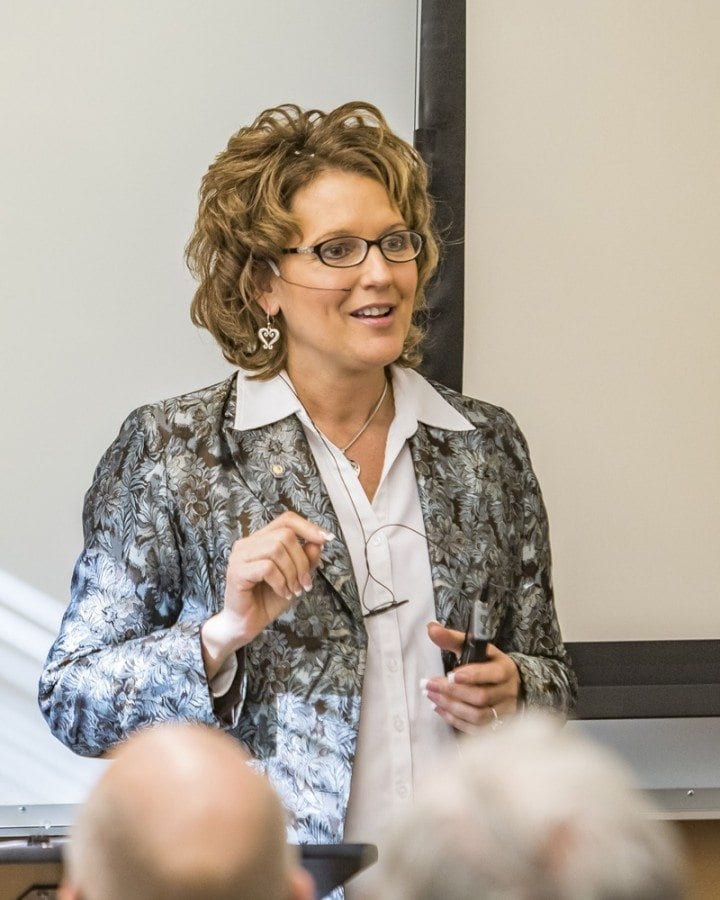
“Traffic congestion in the Interstate 5 and Interstate 205 corridors between Portland, Oregon and Southwest Washington is getting worse,’’ Pike said. “It’s time to move past the defunct Columbia River Crossing (CRC) project and focus on real solutions that will move people and freight through our region in the most efficient and affordable way.’’
The meeting featured five guest speakers offering a variety of potential solutions to the area’s traffic congestion problems.
“Valuable input and discussions with transportation engineers in the region who have shared their professional opinions have provided potential paths forward for new cross-river solutions,’’ Pike said. “Those include new corridors, new bridges, new tunnels and a seismic upgrade of existing bridges.
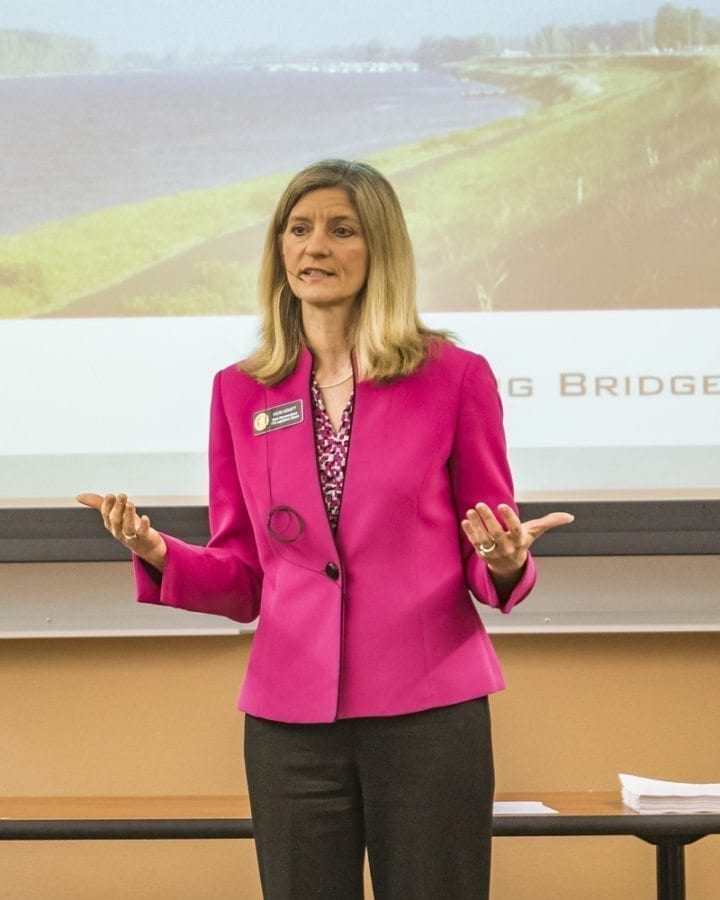
“Elected officials must hear from citizens at the beginning of the process,’’ Pike said. “Whatever proposals put forth must not only have the support of Oregon and Portland, but voters in Vancouver and Clark County must also be given equal respect in determining affordable and workable solutions.’’
“It’s very important for Rep. Pike and I to hear from you,’’ Kraft said. “We have to take the next step, but it’s going to take many steps. We need to hear from you because we are working hard to put together the right solutions.’’
Guest speakers
The first speaker at Saturday’s event was Kevin Peterson, a traffic architect who lives in Washington state and has 35 years experience all over the world providing traffic solutions and contributing on projects.
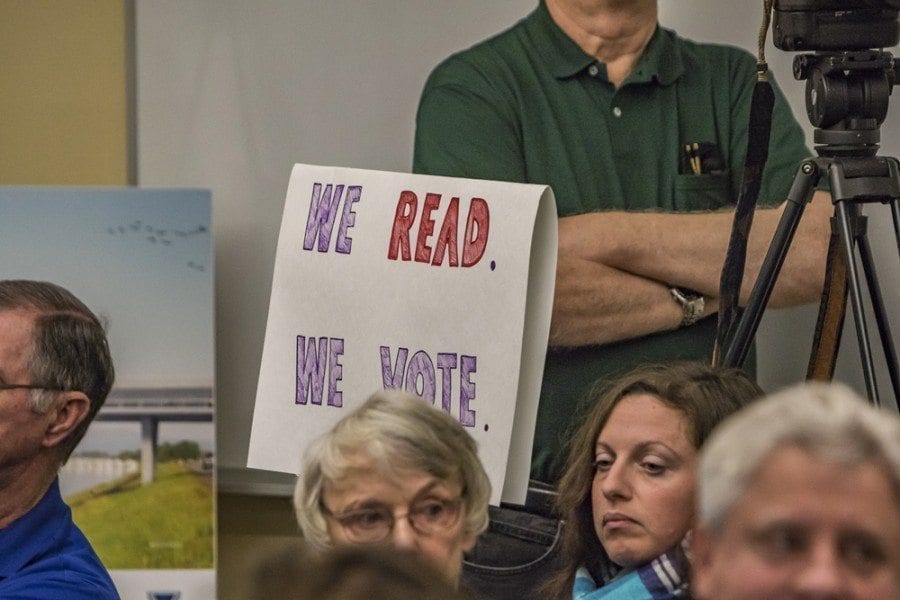
Peterson pointed out that projections in the not-too-distant future have Clark County growing to a population of about one million and the Portland Metropolitan area expanding to more than three million people. One of his fundamental concerns is whether or not the two existing Columbia River crossings are sufficient for an area with a population continuing to expand.
“Two corridors is the question,’’ Peterson told those in attendance. “The question is and always has been is this enough?’’
Peterson boldly went on to answer that question.
“It’s going to be a large deficiency in the future,’’ said Peterson, referring to the fact that the area currently has just two crossings over the Columbia River.
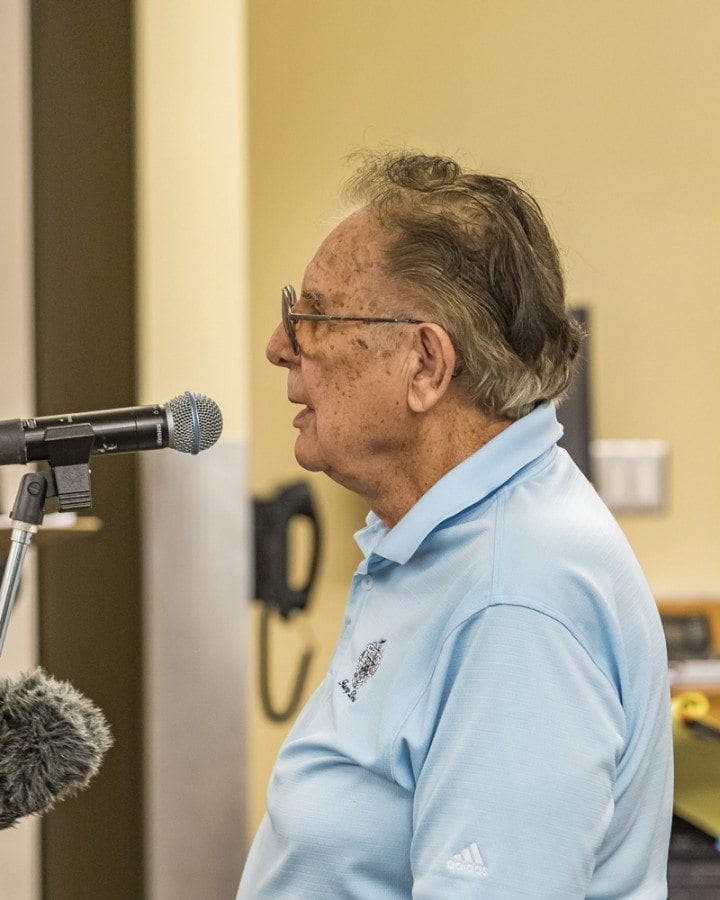
As far as the role public transportation plays as a potential problem to the area’s traffic congestion, he said the use of buses is more practical than light rail, which was a component of the failed CRC even though voters in Clark County have consistently and loudly stood in opposition to it.
“The thought that light rail can come to the rescue, it simply doesn’t have the capacity to meet that need,’’ said Peterson, who pointed out that the two-car light rail system proposed with the CRC doesn’t meet the need. “As long as Portland doesn’t want to increase capacity, you’re stuck with buses.’’
Peterson claimed that the present capacity for crossing the Columbia River needs to “double in our children’s lifetime.’’ As a result, a third bridge over the eastern corridor “is the only thing in the near term that makes any sense as far as strategy.’’
Bill Wagner was the next speaker. Wagner offered a “West Express’’ solution to the area’s traffic congestion, a project he admitted would cost “billions over the next 15-20 years.’’
The West Express would cross the Columbia River just west of the existing I-5 bridge and Phase 1A of the project would re-connect with I-5 south of the I-5 bridge. Phase 1B continues through the St. John’s area of Portland and then to Swan Island before connecting to I-405. Phase 2 would continue to Highway 26 and connect just past Highway 217 in Beaverton.
‘It connects five industrial parks,’’ said Wagner, who also claimed the West Express would pull one-third of the traffic off the I-5 corridor allowing traffic to flow freely. “There really aren’t any existing houses (in the way) and it’s wetlands compatible.’’
Wagner said the West Express would have northbound lanes, two southbound lanes and two express lanes.
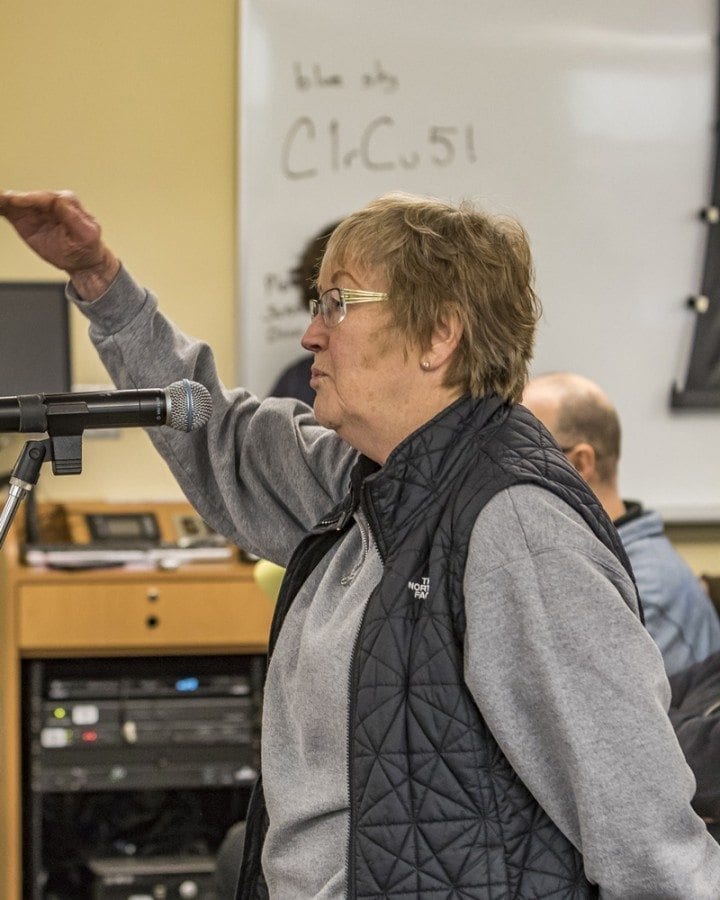
Dave Nelson informed those in attendance of his “Practical Design Flyover’’ solution. Nelson, a retired transportation coordinator who lives on the Columbia River near the I-5 bridge, proposes the addition of six lanes on a project that repurposes the existing I-5 bridge.
“The political climate is getting more favorable only because things are getting worse in terms of traffic,’’ Nelson said. “My opinion is that what happened to the CRC is that bureaucrats took over and the legislators were not involved. It got away from them.’’
Nelson’s proposal would start with a bypass from Victory Blvd. in Oregon to Mill Plain in Vancouver. There would be six lanes and two additional lanes dedicated to rapid transit.
“Eventually, we would replace the old bridge with a lower bridge adding capacity,’’ said Nelson, who indicated the project would cost about $1 billion for the bridge and about $0.5 billion for permitting and land acquisition. “This is the easiest thing to do and we’ve got a lot of work to do and we have to get at it now.’’
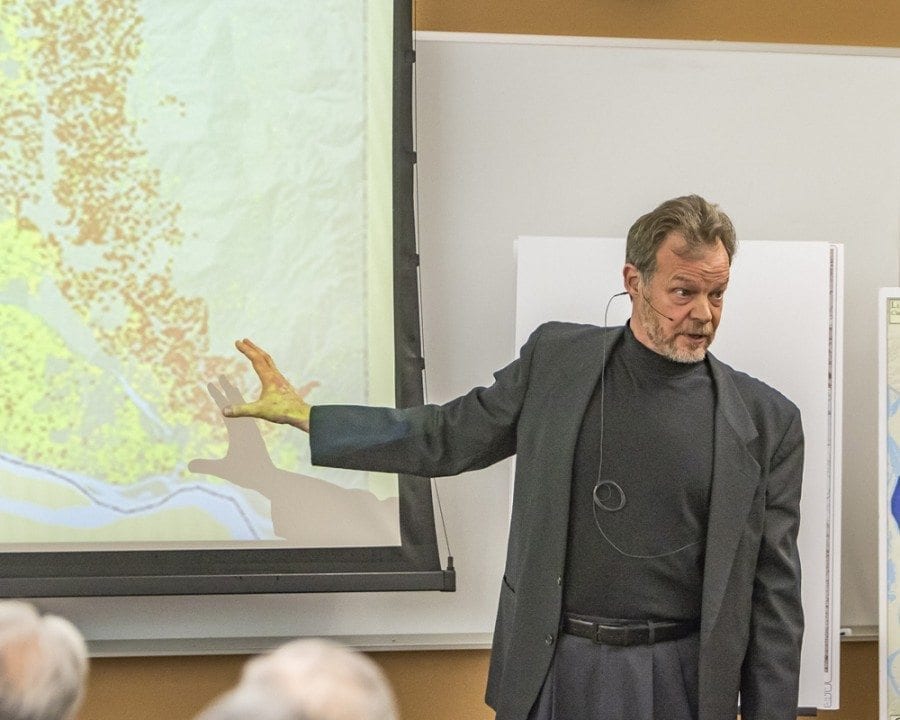
Russell Call, a vice president/Project Development for Figg Engineering, spoke about the proposed New East County Bridge, which would connect 192nd Ave. in Clark County with Interstate 84 at 181st Ave. in Portland.
The four-lane bridge would provide access to cars, trucks and buses and would not be home to light rail. There would be a lower level devoted to pedestrian traffic. It would be a five-year project, two of which to address environmental issues and three years to construct.
Cost estimates for the project are about $860 million. In an advisory vote in November 2013, Clark County citizens approved a resolution urging the Board of County Commissioners to support the concept of an East County Bridge.
After the I-35W Bridge over the Mississippi River collapsed in Minneapolis, Minn. in 2007, Call said Figg Engineering rebuilt that bridge in 11 months for a total cost of $234 million.
The final presenter was Bill Huyette, who offered a solution in the form of a new tunnel alternative below the I-5 corridor that would start near Leverich Park in Vancouver and resurface at the I-405/I-5 connection in Portland. The project, which Huyette is developing with Mike Pauletto of Vancouver’s M. Pauletto and Associates, would include a $300-500 million seismic upgrade of the existing I-5 bridge.
The project would have a construction time of 4-5 years and would be paid for partially with tolls, via a “private-public partnership.’’
“The public has to have skin in the game,’’ Huyette said.
Citizens get their turn
About 20 citizens signed up to speak during the final 45 minutes of Saturday’s meeting and the comments were as diverse as the proposals presented by the guest speakers. Here’s a sample of the thoughts of those citizens who took their turn at the microphone:
- “As long as light rail between Portland and Vancouver is part of the deal, citizens of this city are not going to accept it,’’ said Larry Patella. “Nothing has been said about creating jobs here in Vancouver so they don’t have to cross that bridge.’’
- “The No. 1 concern that should be coming out of every transportation official’s mouth is the issue of safety,’’ said John Ley. “There is a huge safety issue that needs to be addressed. That is, sadly, the Rose Quarter. The Rose Quarter, according to a 2012 city of Portland study, has the highest accident rate of any section of road in Oregon. This 2-lane, 2-mile stretch of I-5 is a safety issue that must be addressed before anything else … No. 2, we need more corridors … Portland has a dozen bridges across the Willamette River. Why should we be limited to just two ways to cross the Columbia?’’
- “At Monday night’s Vancouver City Council, I did vote for the measure for the I-5 bridge replacement, I voted for that because of the fact I wanted to have it unified but I did give the stipulation that I wanted a third bridge first,’’ said Vancouver City Councilman Bill Turlay, who said his wife Stephanie was the first to contact Linda Figg of Figg Engineering about submitting a proposal on the East County bridge.
- “The I-5 bridge is not safe; it’s an antique,’’ Jackie Lane said. “Additional crossings are important, but we need to fix the I-5 bridge first. Having a drawbridge in that corridor is crazy.’’
- “The Rose District, that’s got to be addressed before anything else,’’ Steven Cox said. “Third bridge vs. the I-5 bridge, I would like to see both go on if that’s financially possible. If not, I still give the priority to the third bridge … The assumption that we can’t build more roads is erroneous, it’s unqualified. We can do anything we want .. The one symbol that we have in America of our freedom, and liberty, the ability to move about and go where we want is the automobile .. The social engineers who are trying to force us out of our cars, it ain’t happening.’’
- “Public transportation is something that Clark County voters really need to think about long and hard for our sustainable future,’’ said Donna Sinclair. “Cars are fine, but we need other options.’’
- “Light rail is our only way to go,’’ said another unidentified speaker. “Public transportation is our way to go. Any option that doesn’t include public transportation just doesn’t make sense.’’
- “(Bringing jobs here) is one of the best possible solutions we could have,’’ said Clark County Councilor Eileen Quiring. “What we have right now (in terms of crossings) is not good … We have to be able to get back and forth between our communities.’’
- “The I-5 bridge (replacement) that they planned for however many million dollars did a disturbing disservice to freight mobility,’’ said Darlene Johnson. “We need additional bridges … You can’t get the freight delivered in a timely manner because of the congestion. Any plan has to consider freight mobility. When you have trucks moving faster, cars are moving faster.’’
- “I think at a minimum we should have a third bridge to alleviate any construction trouble we might have before we begin on the I-5 bridge,’’ said Joseph Wagner.




